Samsung S9 Plus review: a powerful, super-sized Android phone
Read T3's official Samsung Galaxy S9 Plus review now

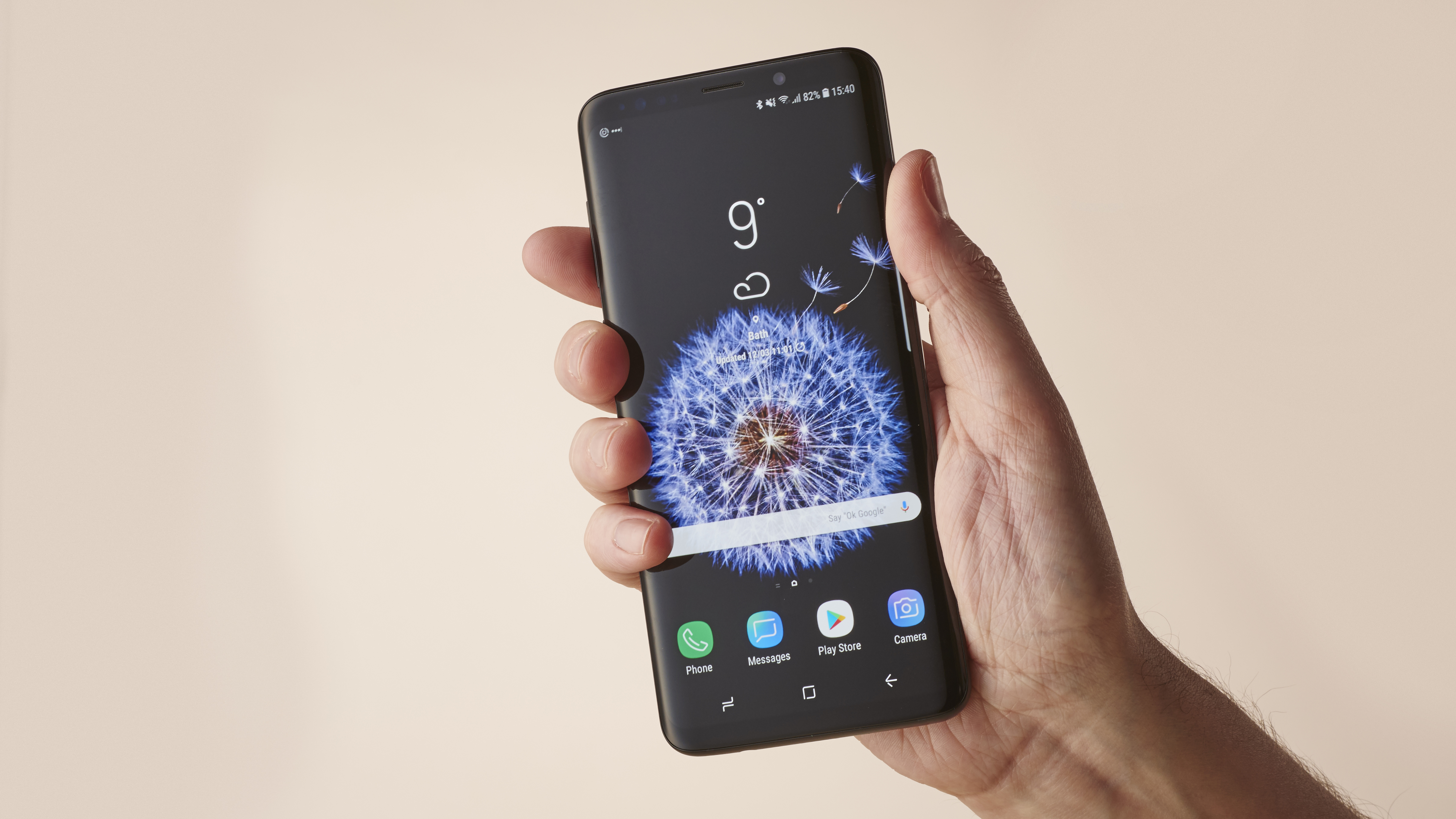
The Galaxy S9 Plus is, technically, the best phone Samsung offers. It takes everything the Samsung Galaxy S9 delivers and then throws in some extra RAM and a 6.2-inch version of that drop-dead gorgeous Super AMOLED 18.5:9 display that continues to wow us. You need to be a screen-space aficionado or someone with big hands to fully justify its purchase, though.
-
+
Standout dual-lens camera system
-
+
Luxe 6.2-inch Super AMOLED display
-
+
Better-placed fingerprint sensor
-
-
Similar to Galaxy S8 Plus
-
-
More expensive than S9
Why you can trust T3

Samsung Galaxy S9 Plus specs
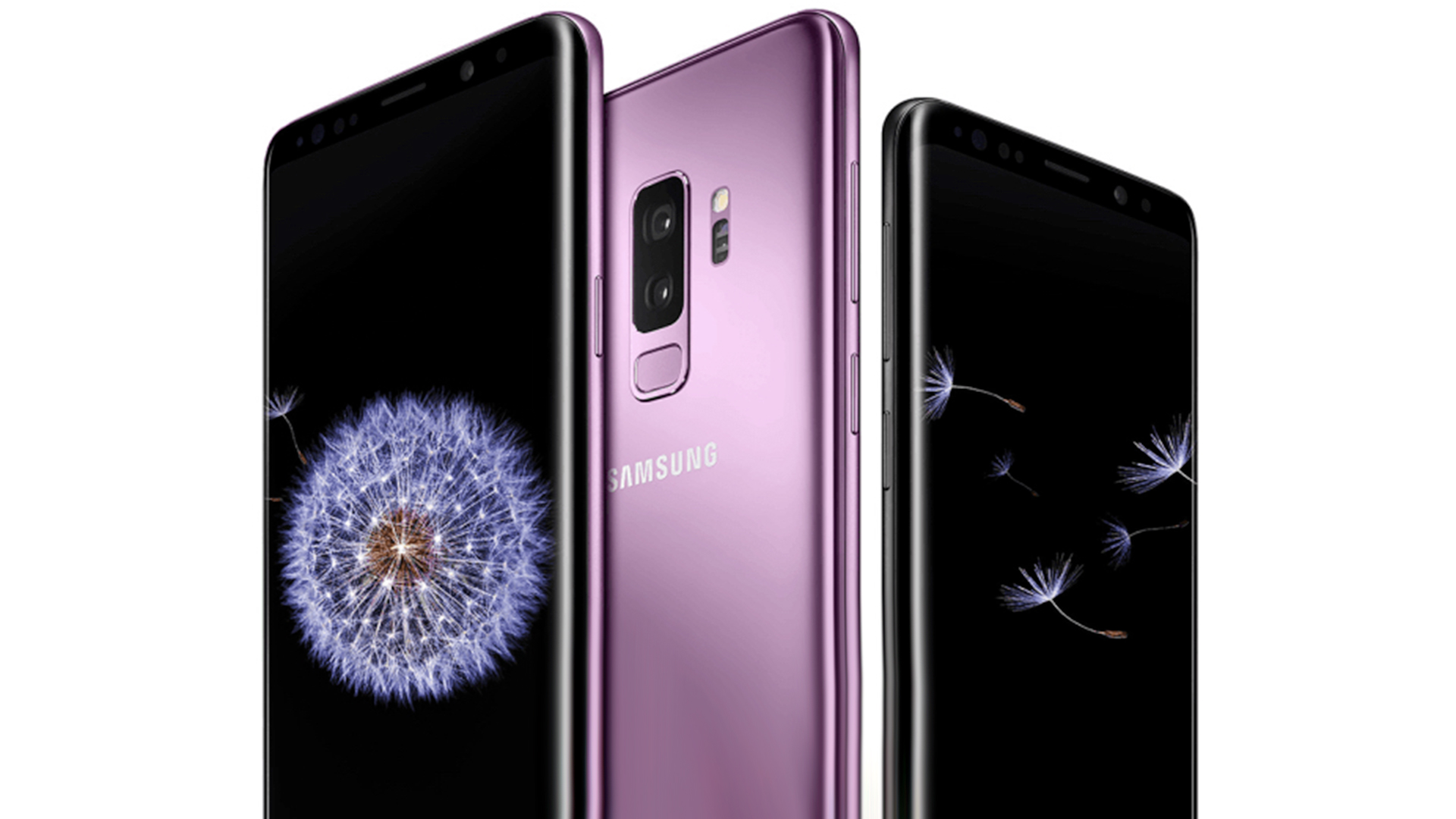
OS: Android 8.0 (Oreo)
Processor: Octa-core processor (2.8 GHz Quad + 1.7 GHz Quad)
Display: 6.2-inch Quad HD + Curved Super AMOLED, 18.5:9 (529ppi)
RAM: 6GB
Rear camera: Super Speed Dual Pixel 12MP AF sensor with OIS (F1.5/F2.4)
Front camera: 8MP AF (F1.7)
Dimensions: 158.1mm x 73.8mm x 8.5 mm
Weight: 189g
Storage (internal): 128GB
Storage (external): MicroSD up to 400GB
Battery: 3,500mAh
Simply put, the Samsung Galaxy S9 Plus is a bigger version of the Samsung Galaxy S9. (Check out our Samsung S9 review to find out more about the S9 Plus's smaller sibling.) And this comes without the S9 Plus being that much different to last year's Samsung Galaxy S8, either.
Yes, it is an iterative update, but when you consider how most other Android makers are still in the process of catching up with Samsung's technical juggernaut, that is no bad thing, especially when you consider what Samsung has spent its time adding this time around.
- Want a closer look at last year's big phone offering from Samsung? Our S8 Plus review is here
- Best Samsung Galaxy S9 cases

The Samsung Galaxy S9 Plus looks identical at first glance to the S8 Plus. There are differences, though.
As with the Samsung Galaxy S9, the standout new hardware on the Samsung Galaxy S9 Plus this year is the phone's rear 12MP dual-aperture camera system, which not only offers enhanced low-light and bright-light image and video taking capabilities, but also sits at the heart of this year's other innovations, such as Super Slow-mo recording, AR Emoji, and an upgraded version of Samsung's Bixby assistant AI, which now delivers real-time object detection and recognition, so again its focus makes sense.
And the new camera system, as well as AR Emoji and Bixby Vision are not the only things the S9 Plus shares with the S9, too. In terms of hardware, there is very little difference between the two handsets (the S9 Plus has a little more RAM and internal storage), so it's only natural to wonder what makes the more expensive S9 Plus worthy our attention.
For the answer and all-important detail then read on.
Samsung S9 Plus review: price, colours, and release date
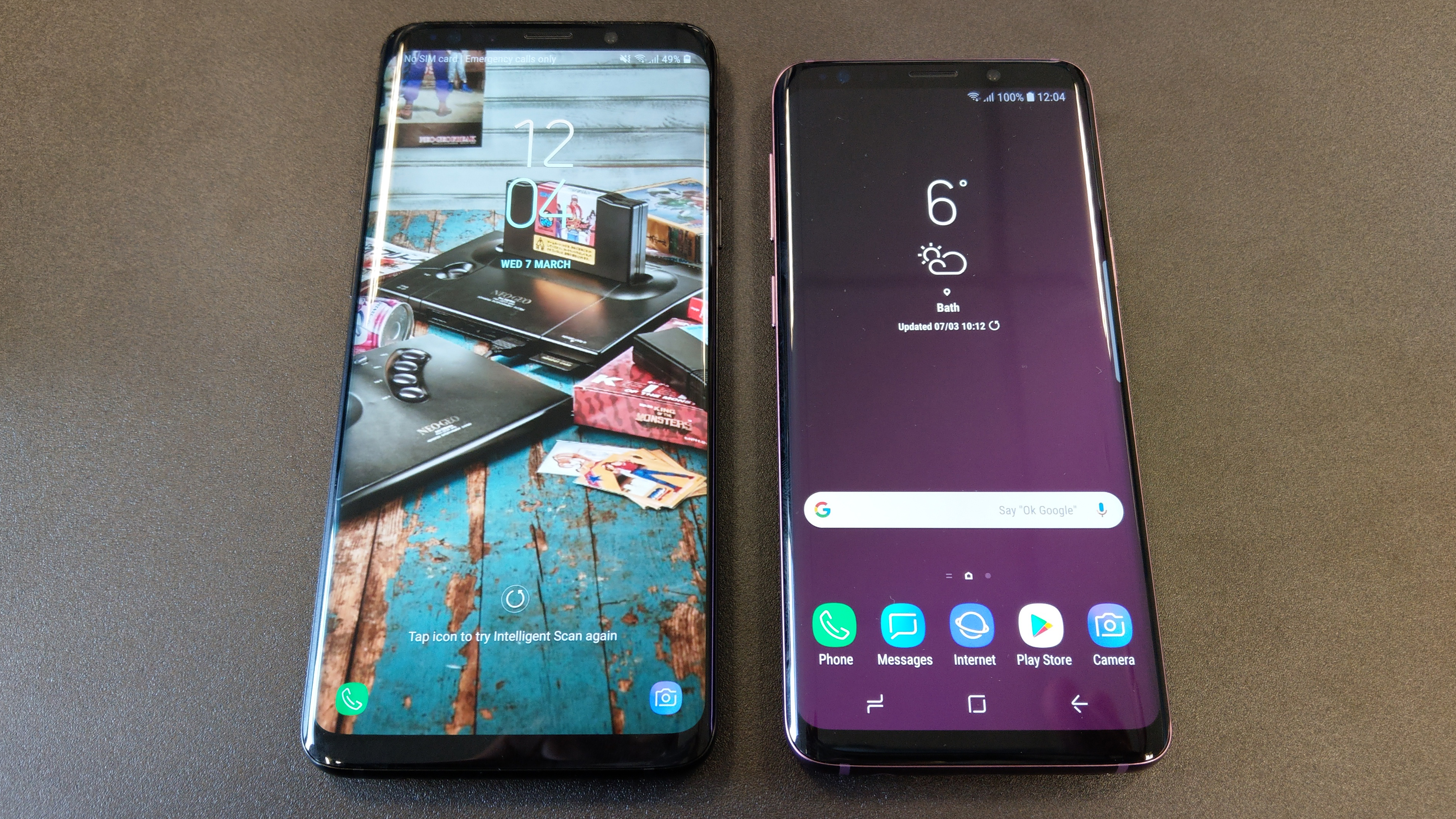
Both the Samsung Galaxy S9 Plus and S9 share the same fantastic Super AMOLED screen tech.
The Samsung Galaxy S9 Plus will be available in the UK (and worldwide) from March 16th, with pre-orders open on February 25th from 18:00 GMT.
The Samsung Galaxy S9 Plus will be available in three colours: Lilac Purple, Midnight Black (the model we reviewed) and Coral Blue.
Get all the latest news, reviews, deals and buying guides on gorgeous tech, home and active products from the T3 experts
The Samsung Galaxy S9 Plus will cost £869. The phone will be purchasable directly from Samsung as well as select retailers.
Samsung S9 Plus review: design and build quality
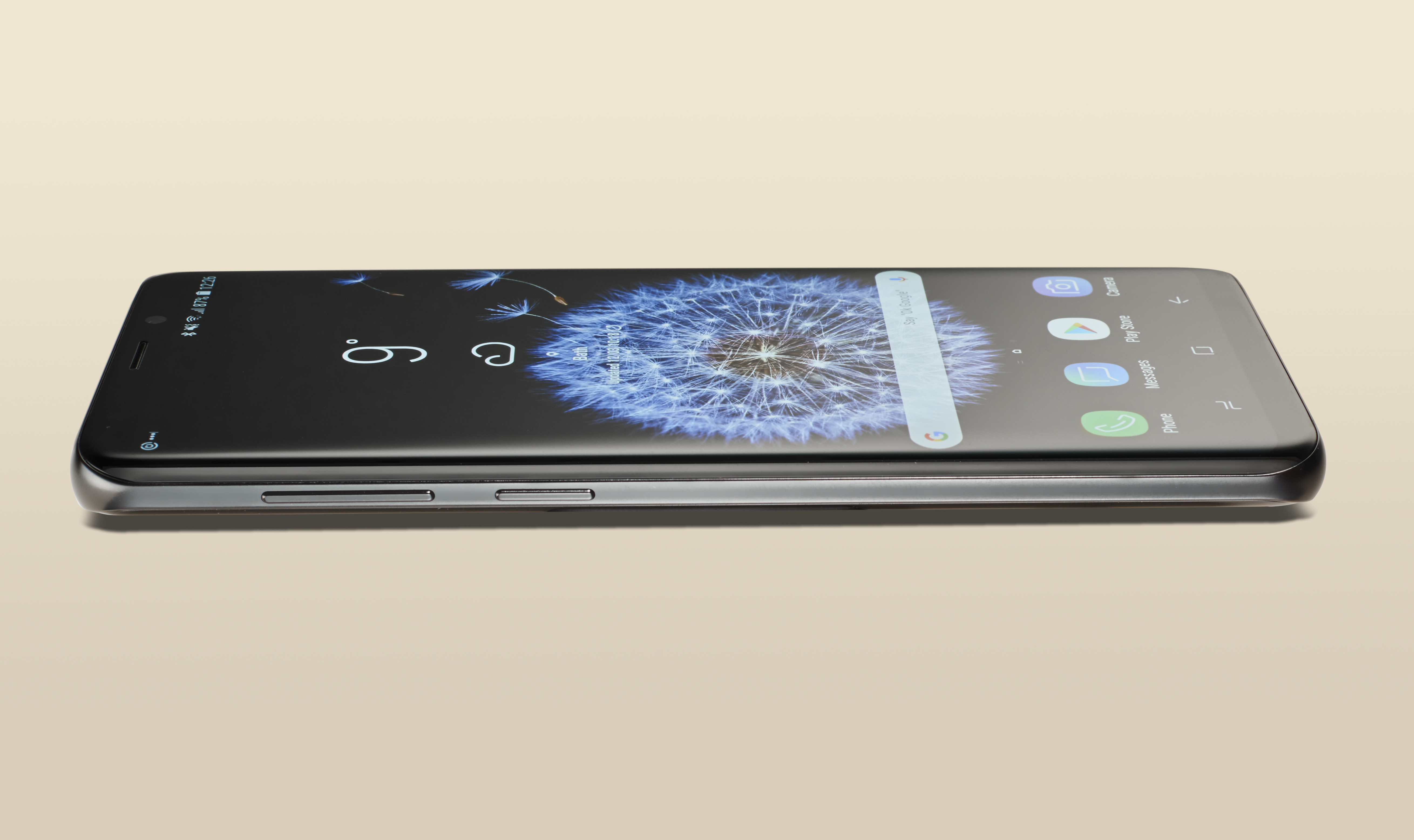
Wired headphone users will be pleased to hear the S9 Plus retains a headphone jack.
As viewable in the image a little further up this page, the Samsung Galaxy S9 Plus is identical to the Samsung Galaxy S9, just bigger. It also looks, at first glance, just like the Samsung Galaxy S8 Plus from last year, but in actual fact they are not identical.
The same luxurious and premium melding of metal frame and glass is still in evidence, however, and as with the S9 if you look closely you will see that the Galaxy S9 Plus's bezels are now slightly reduced, shaving a little off the phone's total height.
The other major difference to the Galaxy S8 Plus in terms of design, as we mentioned above, is that the phone's fingerprint scanner is now located centre-back of the handset under the dual-aperture camera system. We feel this not only looks better but, in practice, makes it far easier to unlock the phone while also avoiding smudging the rear camera's lens in the process (a common complaint last year).
Other than that, much has stayed the same. The S9 Plus still has a 3.5mm headphone jack, microSD card slot (which can take up to 400GB), and Bixby button on the left side of the device near the volume buttons.
Samsung S9 Plus review: screen and hardware

The S9 Plus is very tall but doesn't feel overly wide thanks to its curved screen edges and 18.5:9 aspect ratio.
The S9 Plus' screen is the same delicious 6.2-inch display that featured on the Samsung Galaxy S8 Plus and, yes, it is still drop-dead gorgeous. It looks superb on the S9 and, with extra space available here, the Super AMOLED 18.5:9 panel only looks even better. The Quad HD+ resolution at 529ppi looks pin sharp and delivers fantastically vibrant colours and a high contrast that makes images, games and media really jump out of the screen.
The screen also fills 90 per cent of the phone's front space and, with zero sensors, buttons or visible cameras, has an incredibly elegant and futuristic look.
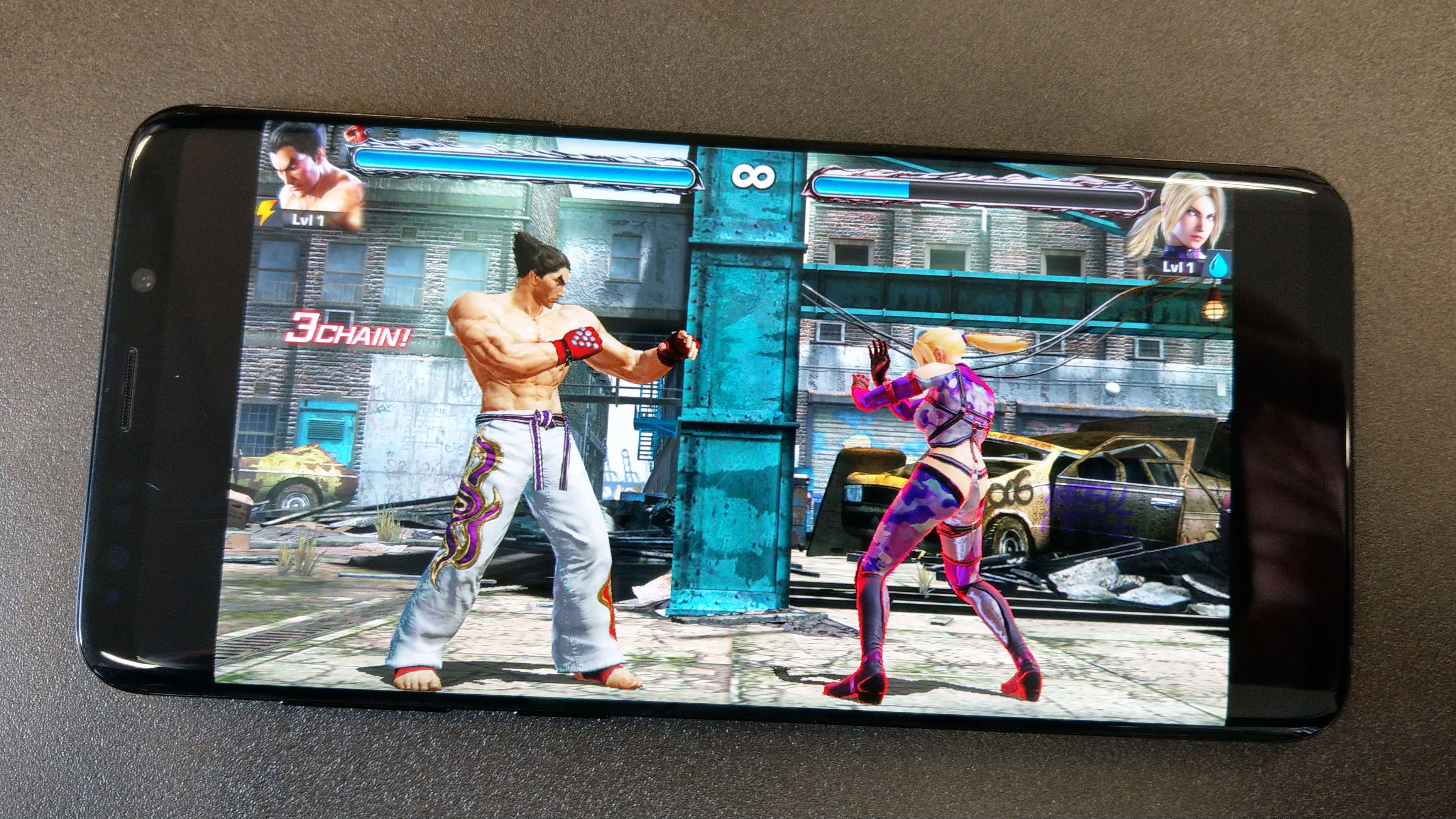
Playing modern smartphone games like Tekken is a real pleasure on the fast and vivid S9 Plus.
While the screen itself isn't new, Samsung has tweaked the screen's landscape mode, meaning that the whole user interface now rotates to fit the widescreen format, meaning that you can easily respond to messages and post to social media while still enjoying your video content.
In terms of internal hardware spec, the Samsung Galaxy S9 Plus comes equipped with 6GB of RAM (the S9 has 4GB), 128GB of internal storage space and its new Exynos 9810 processor (well, everywhere except the US market, who are getting Qualcomm's Snapdragon 845 CPU).
This combination of internal hardware, in partnership with the S9's Super AMOLED screen, simply delivers a fantastically fast, vivid and powerful user experience. Games load quickly and run smoothly, 4K, HDR films and TV shows look stunning, and using and switching between apps is seamless and delay-free.
Samsung S9 Plus review: camera
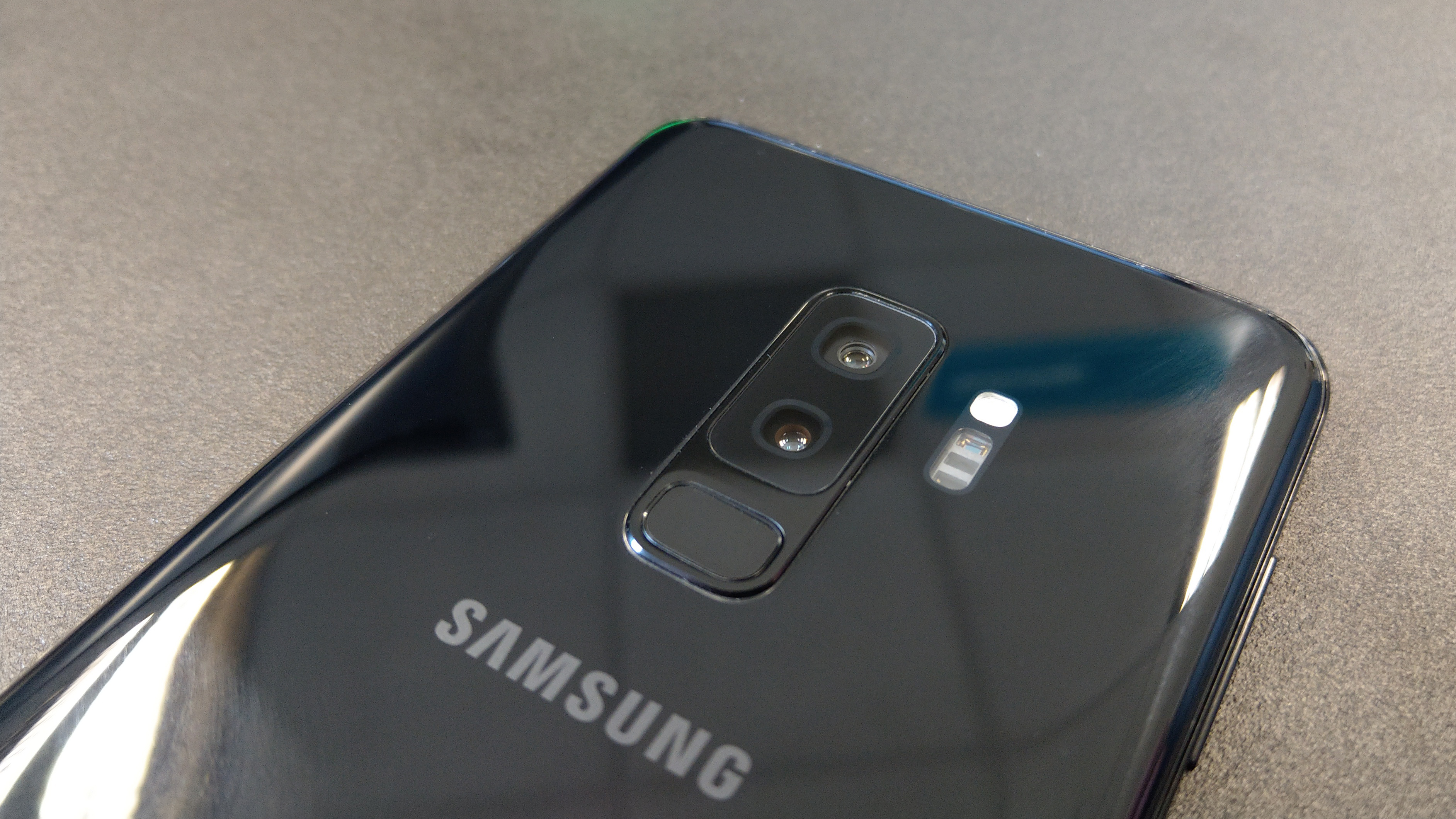
The S9 Plus, like the regular S9, comes packing Samsung's new dual-aperture camera system.
Both the S9 Plus and S9 share Samsung's new 12MP rear camera with dual-aperture technology, a system that has been designed to deliver enhanced low-light and bright-light image and video taking.
The camera works by ditching the fixed aperture system that is common in smartphones today for one that can expand and contract like the iris of a human eye. This means that the S9 Plus's camera automatically lets in more light to its sensor when the surrounding environment is too dark, and then less light when it is too light, leading to less images that are blown out or too dark for detail to pop.
The camera system is also now capable of recording Super Slow-mo video at 960fps at 720p, and 240fps at 1080p, with both modes also packing Motion Detection technology. This means that when the user selects a slow motion mode all they have to do is hold the phone up to the thing they want to record and wait for the action to begin - the camera will automatically start recording when it sees any movement.
As you can watch above, we've been playing with the super slow-mo camera mode quite a bit in the T3 office and we have been very impressed with the quality of slow-motion footage captured - which can then be easily turned into a video, gif or even live wallpaper for the phone - as well as the accuracy and speed of the automatic motion detection.
Both this 12MP rear camera and the Samsung Galaxy S9 Plus' front 8MP camera are also central to delivering this year's other key innovations for Samsung - AR Emoji and Bixby Vision.
Samsung S9 Plus review: AR Emoji and Bixby AI assistant

No doubt influenced by Apple's Animoji on iPhone X, Samsung has gone about bringing its own version to the Samsung Galaxy S9 and S9 Plus – AR Emoji.
AR Emoji is a feature built into the system's camera application that allows user to take a selfie of their face and then have it turned into a virtual avatar of them. Once this is achieved a selection of clothes, hats and accessories can be used to style up the avatar. These aren't extensive, however, there is a solid selection and more will no doubt be added.
The AR Emoji are created by the camera analyzing the taken 2D image with a data-based learning algorithm, which then maps out over 100 facial features to generate a 3D model. The avatar can then display a variety of expressions and emotions.

One of our AR Emoji avatar's stock gifs.
You can pose the AR Emoji, too, by holding the camera up to you (as if you were taking a selfie) and the AR Emoji will then mirror your expression and pose (see below image for an example).
At this point you can then take a picture of your AR Emoji, or record a video with sound of you speaking, with your avatar mimicking your actions. These videos are then saved as gifs for ease of sharing on your social or messaging application of choice.

Here comes the smolder...
You can also select from 18 different stock expressions as well if you just want to fire back a stock response to a message. Neatly, these are embedded into the Samsung keyboard, meaning you can bring them up and add them just as easily as regular emoji.
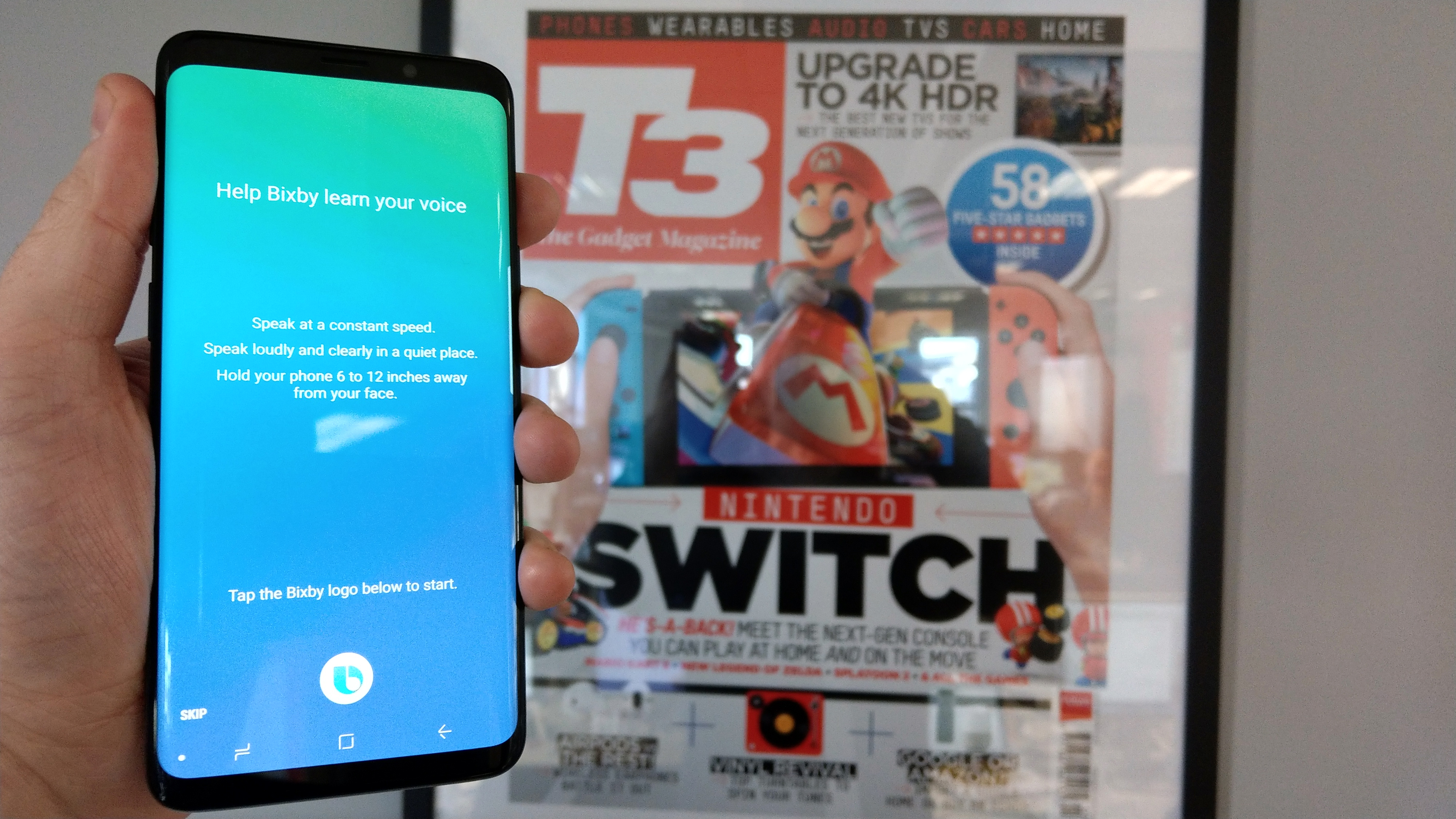
Setting up Bixby is straightforward - grant it some permissions, train it to recognise your voice, and you're away.
Samsung has also retained and beefed up its AI assistant Bixby on the S9 and S9 Plus. Bixby now has a live translation mode that allows you to simply point the phone's camera at a piece of foreign text (see below image as an example) to have it automatically translated live in front of your eyes.
We've used Bixby Vision a number of times during our S9 Plus testing period here at the T3 office, and we've done so with a wide selection of languages, too, including Spanish, Italian and Japanese. And on the whole we've been impressed with the speed and quality of translation.
Bixby Vision also seems to deal well with changes in font and font size, too. Importantly though, this feature isn't hardware based, so you do need a data connection to make it work. So while our experience with Bixby was very fast, we had an excellent 4G connection at all times, so don't expect the same service if you have a poor signal or dodgy Wi-Fi connection.
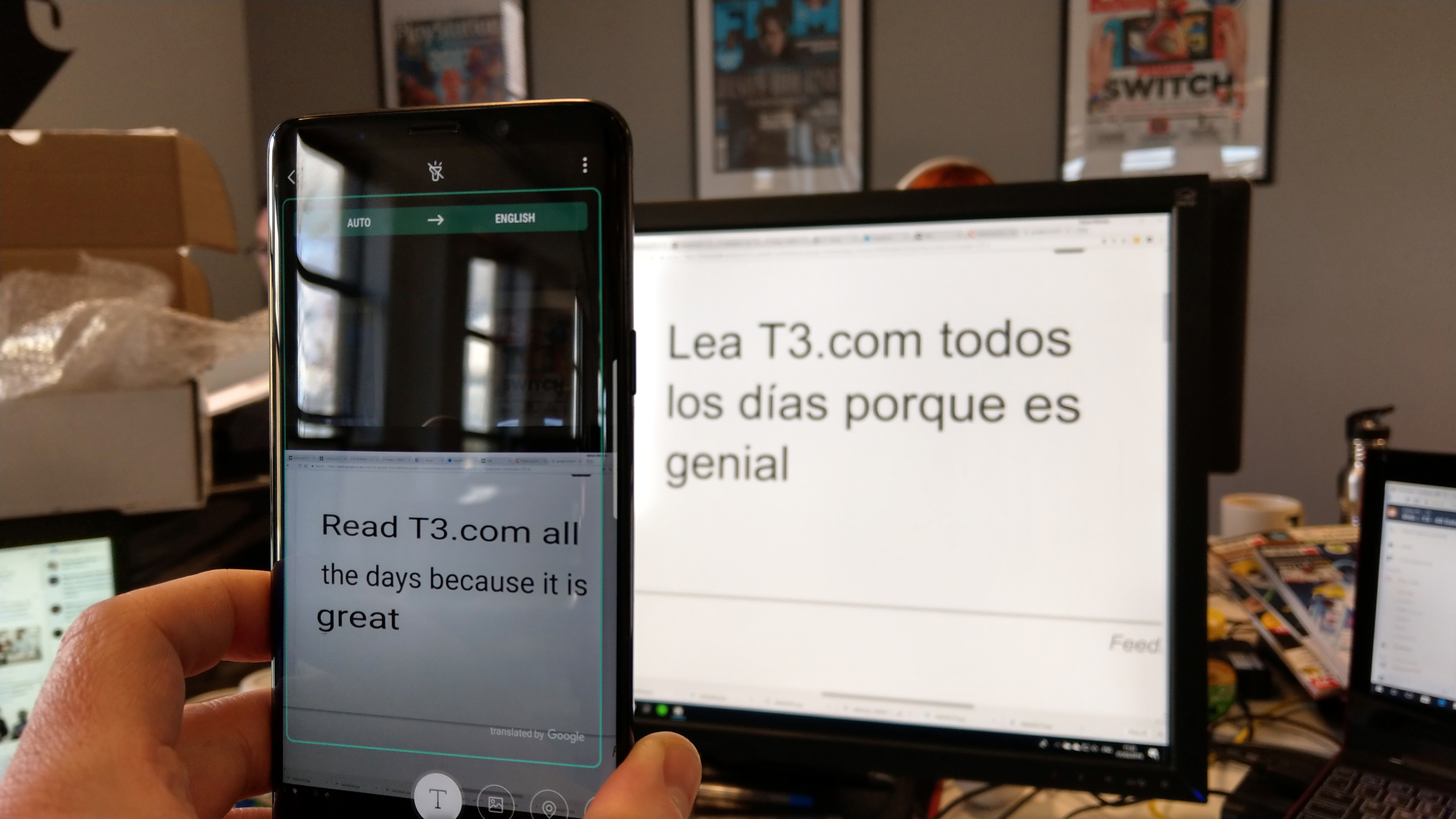
An example of Bixby Vision's live translation of Spanish text into English text.
Bixby Vision is location aware and also allows some AR information to be brought up about foods, monuments, locations and more by simply pointing the phone at the thing in question. As such, if you want to know how many calories are contained in a plate of chips, or the age or history of a specific public statue or building, then you can now do so through Bixby.
Samsung S9 Plus review: audio, battery, security and software
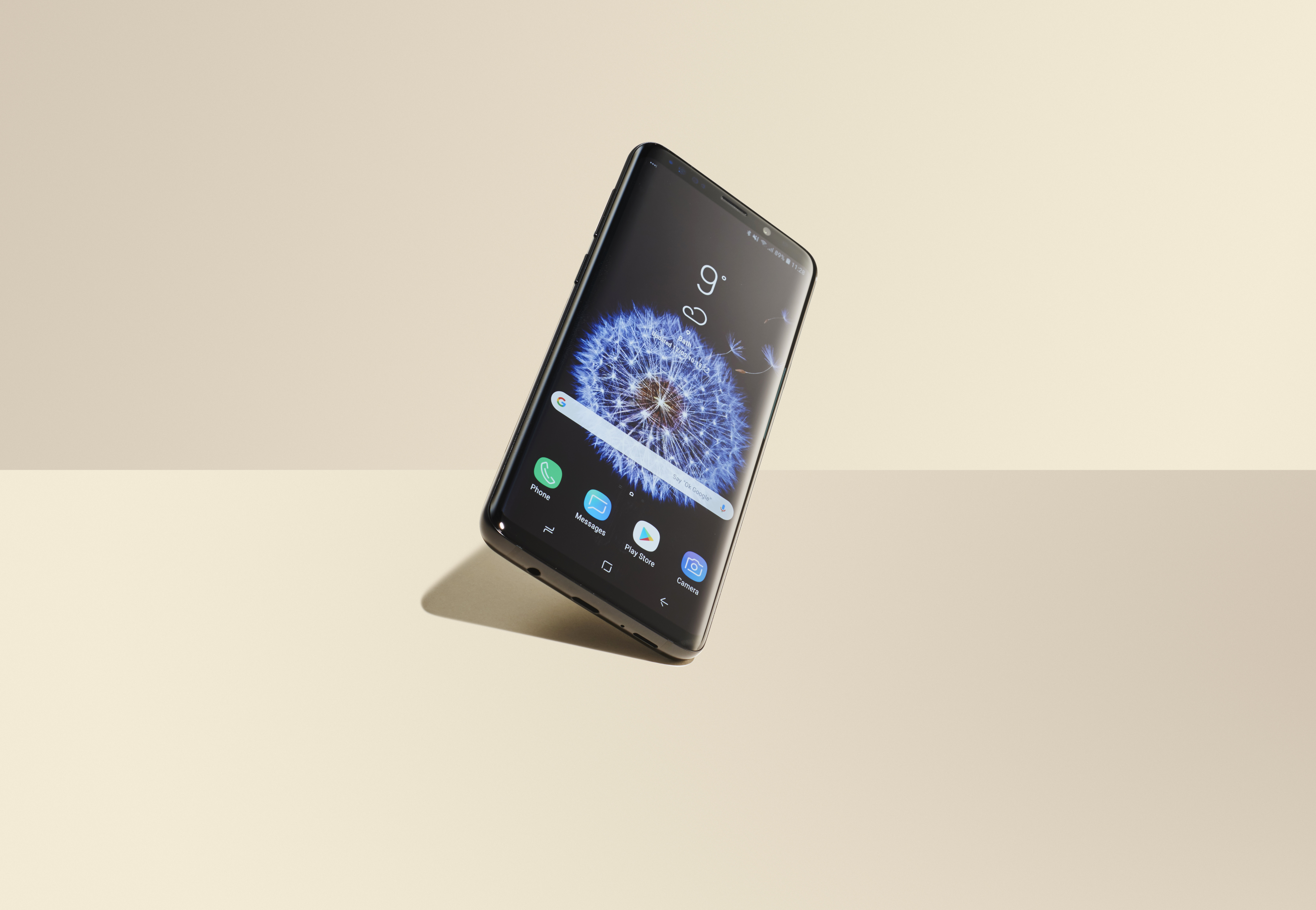
The S9 Plus features the same 3,500mAh battery as in the S8 Plus.
The Samsung Galaxy S9 Plus comes with the same 3,500mAh battery as was included in the S8 Plus. As we mention in our S9 review, we were definitely hoping for an improvement here in terms of capacity but from our time with the phone we are fine with its performance.
The S9 Plus' battery got us through each day during our intensive usage testing period with 25-50 per cent of the battery remaining, so even taking into account some degradation over time we feel, as we saw with the S8 Plus, we feel the phone has an acceptable amount of juice storage. Would we prefer even more, so we could legitimately only charge the phone every other day? 100 per cent yes!
Audio on the Samsung Galaxy S9 Plus is dealt with by a set of new stereo speakers tuned by audio company AKG, which also support Dolby Atmos 360-degree positional audio. We've played about with the S9 Plus' speakers playing at Dolby Atmos compatible video and, yes, we can confirm that sounds do appear to come from various directions, although this simulated surround sound isn't a patch on a proper wired Atmos setup.
Dolby Atmos audio isn't just restricted to compatible A/V encodings though, with the S9 Plus allowing users to select the mode to enhance any standard audio or video file they want. We can confirm that when the mode is selected definition and volume are improved, as well as a degree of depth, too, however it makes little to no affect in terms of the position of various musical elements.
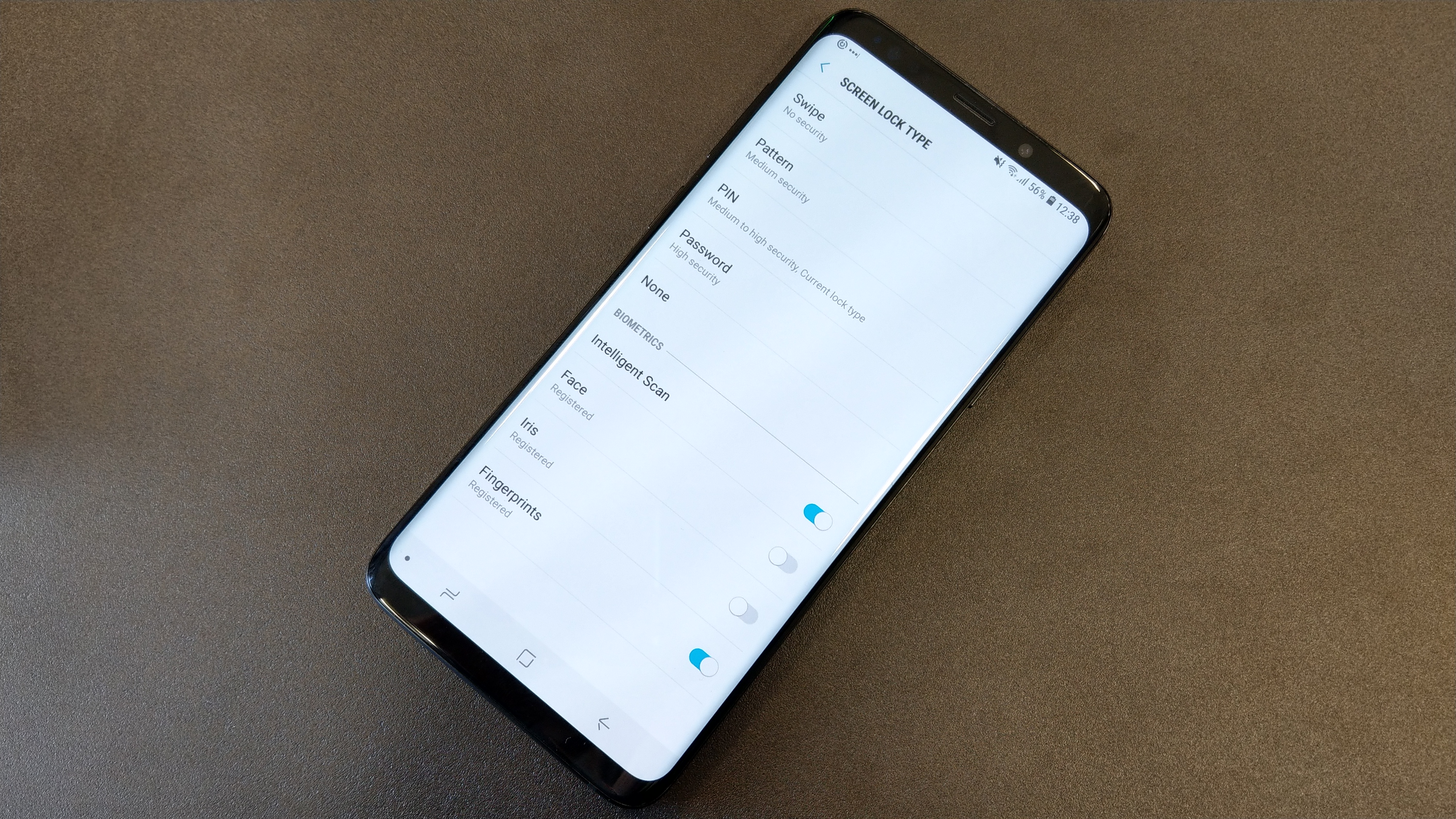
The S9 Plus' Intelligent Scan feature combines facial and iris scanning so a user can unlock their phone simply by looking at it.
Security on the S9 Plus is dealt with, if you so desire, by Samsung's Intelligent Scan system. This combines facial recognition and iris scanning to allow the S9 Plus to be unlocked by you simply looking at the device.
There is also the aforementioned fingerprint sensor, which we can confirm is just as fast as that on the S8 Plus, but now located in its better, central location.
To use these more exotic security systems though requires a back up pin code or pattern to be set, which can also be mandated on device power on.
Finally, in terms of OS, the Galaxy S9 Plus comes loaded with Android 8.0 Oreo, with Samsung's own lightly-skinned TouchWiz UI on top. These run at an absolutely lightning speed on the S9 Plus and lead to an incredibly slick and rapid user experience, with super smooth navigation and app loading.
Samsung S9 Plus review: verdict
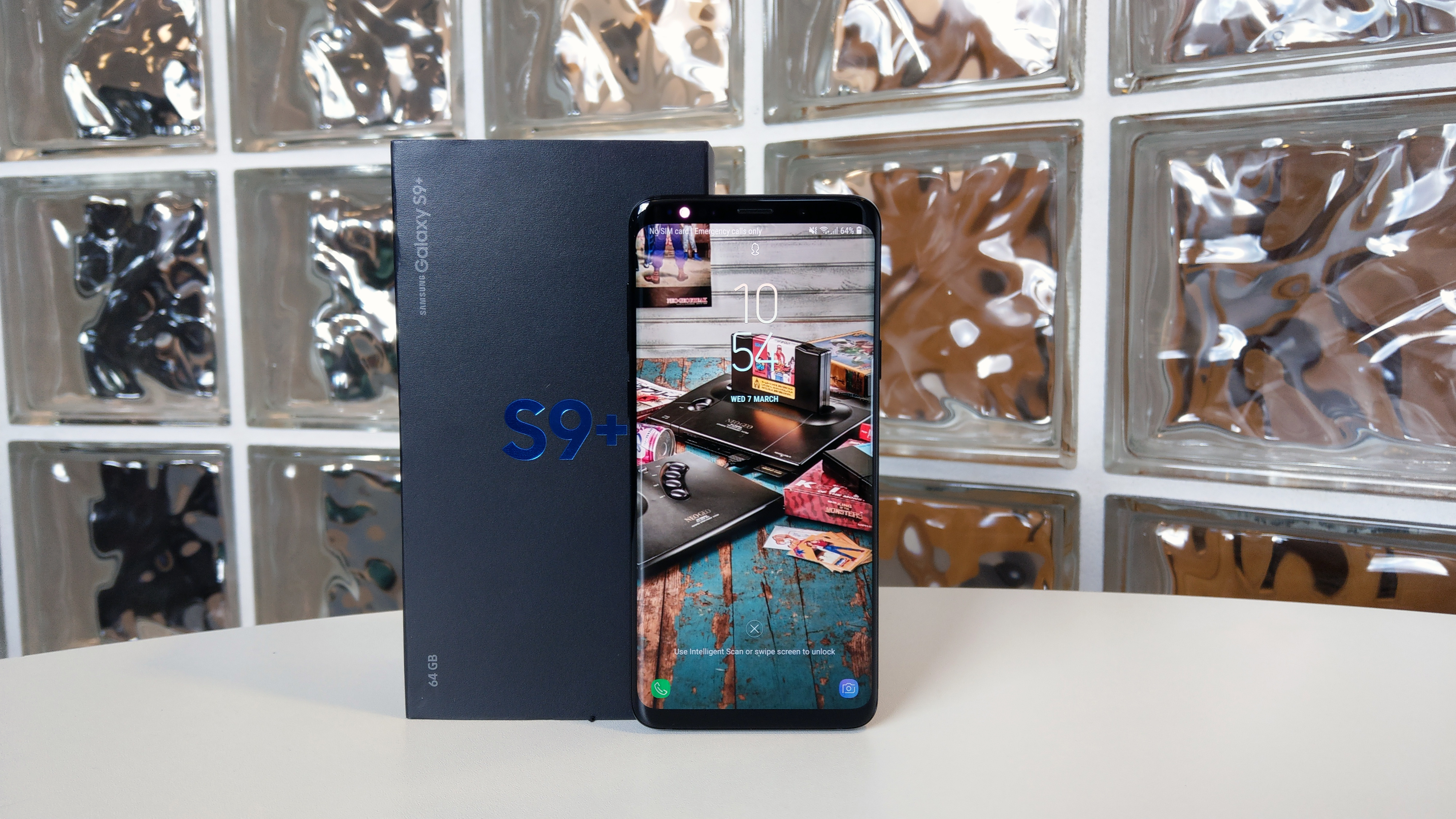
We thought the 5.8-inch Super AMOLED screen on the regular sized Samsung Galaxy S9 was superb, but here, with a huge 6.2-inches of real estate, it just looks stunning. The brightness, contrast, and definition of the panel just blew us away, and the vibrancy of colour too was remarkable. It really is the best smartphone screen in the world right now.
The extra 2GB of RAM over the standard Galaxy S9 (6GB) is also a good fit, and the 3,500mAh battery, while not noteworthy, will deliver similar levels of performance we're guessing to the S8 Plus, which itself was comfortably in a day's usage range with moderate use. Naturally, until we can test the battery fully in our full fat review, we will withhold any definite judgement.
The shifted fingerprint sensor, arguably, makes even more of an impact on the S9 Plus than it does on the S9, too. Now located at the centre-back of the phone under the centrally position dual-aperture camera system, it is incredibly natural now to unlock the phone, even taking into account its large profile.
And, obviously, all the extra features Samsung has brought to the S9 range are as good if not better to enjoy on a larger and fractionally more powerful phone. Creating AR Emoji on the phone is fast and fun, and taking and viewing photos and videos - notably the new 960fps Super Slow-mo videos - on the larger screen a pleasurable experience.
Of course, there are a few caveats to purchase, and we certainly don't think the S9 Plus is for everyone, or an S9-disregarding essential.
Firstly, it is a big phone and, well, you're going to need big hands really for it not to look and feel unwieldy. Secondly, it is a not inconsiderable £130 more than the regular S9, ringing in at rather dear £869 - again, if you don't need that extra screen size then this phone probably isn't for you. And lastly, with both the S9 and S9 Plus allowing you to bolt in large quantities of external storage by MicroSD (up to 400GB, in fact) you'll really want to consider whether you need that 128GB of internal storage that comes with the S9 Plus. The regular S9 comes with 64GB after all, and you can cheaply and easily by a MicroSD card to expand that.
Overall, though, if you want the best big phone on the market right now (and, Note 9 aside, maybe the year) then the Samsung Galaxy S9 Plus is the obvious choice. It is superbly well equipped and, from our time with the phone, it has already gone a long, long way to winning our approval.
- These are the best smartphones from the world's best makers

Rob has been writing about computing, gaming, mobile, home entertainment technology, toys (specifically Lego and board games), smart home and more for over 15 years. As the editor of PC Gamer, and former Deputy Editor for T3.com, you can find Rob's work in magazines, bookazines and online, as well as on podcasts and videos, too. Outside of his work Rob is passionate about motorbikes, skiing/snowboarding and team sports, with football and cricket his two favourites.